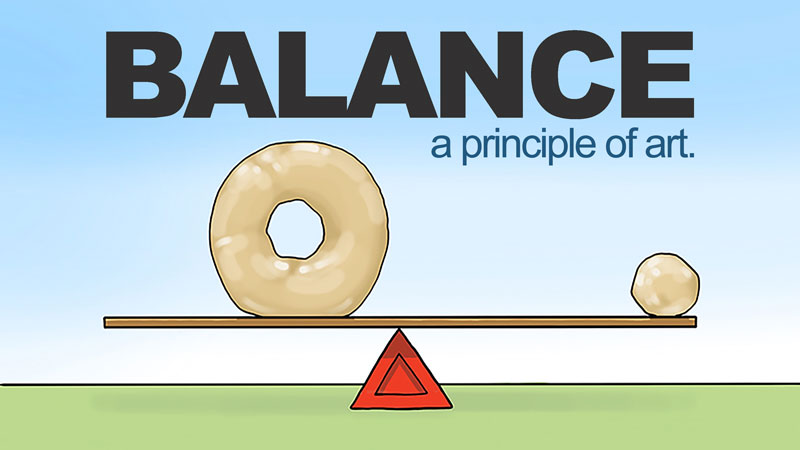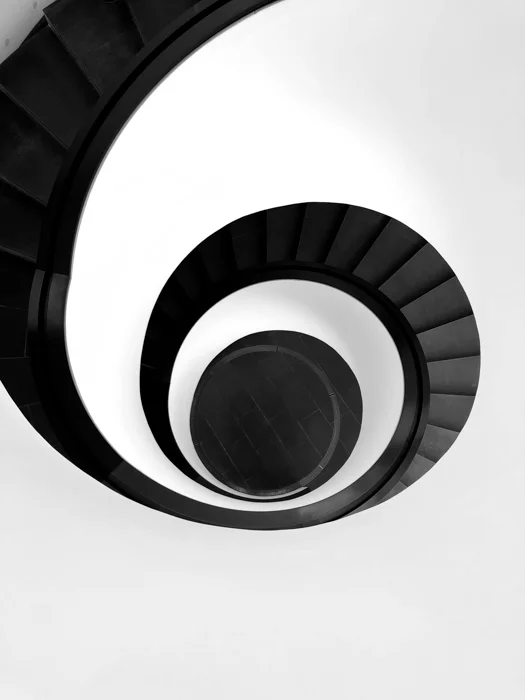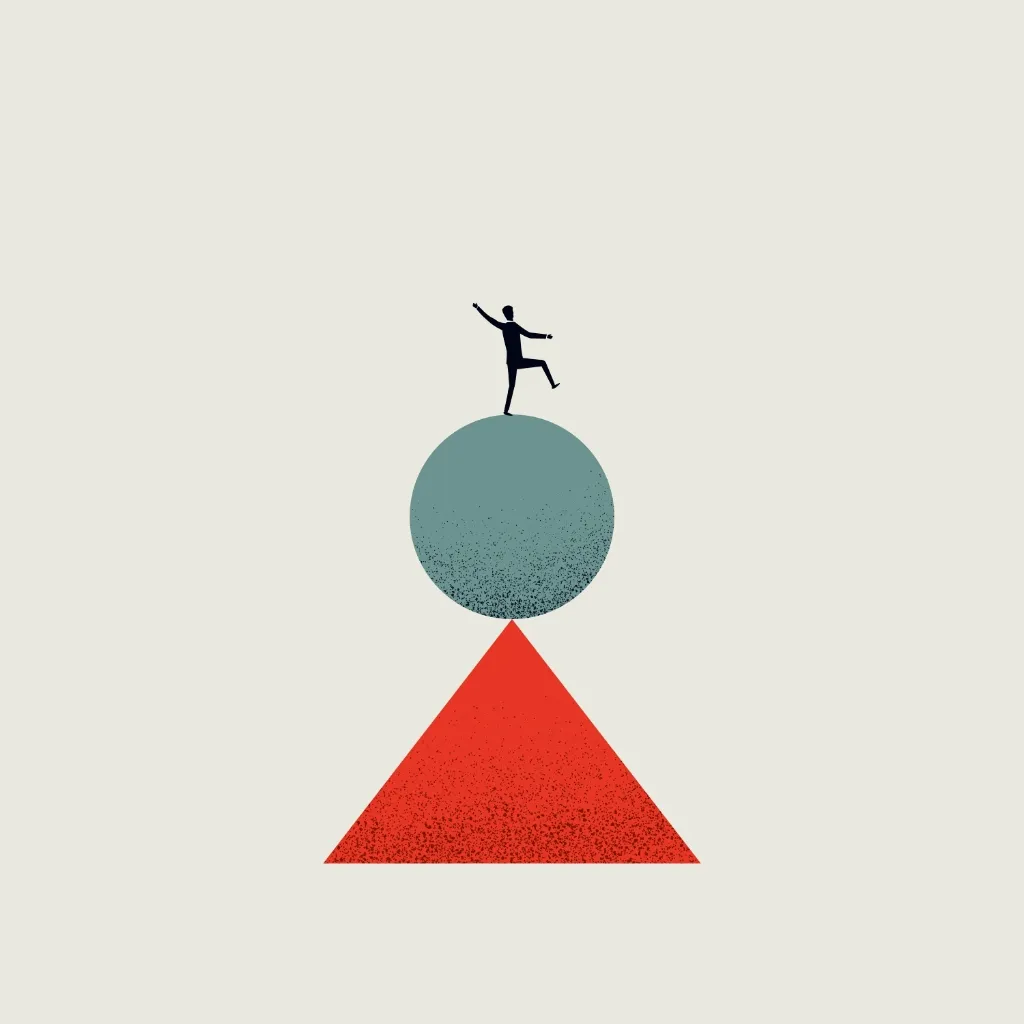In the world of art, balance is like the steady hand of a tightrope walker, ensuring harmony and stability in a piece.
Unlike the physical balance we experience in the three-dimensional world, artistic balance navigates through visual weight.
Just as a sculptor adjusts the weight distribution in a sculpture, an artist manipulates visual elements to achieve balance in their work.
Through this article, we’ll delve into the types of balance in visual art, accompanied by examples to illustrate each concept.
Additionally, we’ll explore practical tips on how artists can utilize balance as a powerful tool in their creative endeavors.
So, let’s embark on this journey to unravel the secrets of balance in art!
What is Balance in Visual Art?

Balance in visual art is like the glue that holds everything together in a painting, drawing, or any other artistic creation. Think of it as making sure that all the different parts of a picture feel just right, so nothing looks out of place or overwhelming.
Artists use various tricks to achieve balance. They might play around with the sizes and shapes of objects, use different colors strategically, or even leave some areas empty to give the eye a break.
When a piece of art feels balanced, it’s easier for people to look at and enjoy. It’s like finding that perfect spot for a chair in a room—it just feels right. That’s what balance does in visual art—it helps everything fit together harmoniously.
7 Principles of Art

- Balance (we are reading about it now!)
- Contrast and Emphasis
- Movement and Rhythm
- Unity and Variety
- Harmony
- Pattern
- Proportions and Scale
7 Elements of Art

Why is Balance Important in Art?

Balance in art is like the secret ingredient that makes a dish taste just right. It’s all about creating a sense of harmony and beauty in your artwork. Think of it like arranging furniture in a room or stacking blocks. When things are balanced, they feel stable and pleasing to look at.
Balance isn’t just about making things look nice, though. It’s also a way to guide the viewer’s eye around the artwork. For example, a big object in the middle might catch your attention first, while smaller objects placed around it make you explore the whole piece.
So, why is balance important in art? Because it helps us create artwork that not only looks good but also tells a story and makes us feel something. Whether it’s a serene landscape or a thrilling action scene, balance is what brings it all together.
The 3 Types of Balance in Art

In the world of art, achieving balance is like finding the sweet spot where everything feels just right.
There are three main types: symmetrical, asymmetrical, and radial balance. Symmetrical balance creates a mirror-image effect, while asymmetrical balance allows for differences on each side while still feeling stable. Radial balance revolves around a central point, spreading out like ripples in water.
Additionally, there’s a fourth type sometimes mentioned: crystallographic balance, where elements are equally important but not arranged symmetrically, resulting in an organized chaos that feels harmonious.
Whether it’s perfect symmetry, controlled asymmetry, a spinning center, or a beautifully chaotic mix, balance in art is all about creating a sense of harmony and completeness.
Symmetrical Balance

Symmetrical balance in art is like a perfectly balanced see-saw. Imagine folding a picture in half, and both sides looking exactly the same – that’s symmetrical balance. It creates a sense of order and calmness because everything is evenly distributed around a central point.
Think of a butterfly with its wings perfectly mirrored on each side or a flower with petals evenly spaced around its center. That’s symmetrical balance in nature. Similarly, shapes like squares, triangles, and circles often exhibit symmetrical balance.
Even if perfect symmetry isn’t possible, approximate symmetry works just as well. This means that while both sides are similar, there might be slight variations, just like how our two sides of the human body aren’t exactly identical but still feel balanced.
Radial Balance

Radial balance in art is like arranging elements in a circular pattern around a central point. It’s like making things symmetrical in many directions at once.
Imagine a cartwheel or flowers spreading out from a center point, or geometric star shapes radiating from a center. This balance creates a sense of order and harmony.
You can see radial balance a lot in nature, like in spider webs or daisy flowers. Artists often use it in still-life paintings, religious designs, and contemporary art to make the artwork look organized and symmetrical.
The goal of radial balance is to attract the viewer’s attention to the central point while creating a soothing and balanced layout around it.
It’s like drawing the viewer’s eye in and making them feel calm and focused.
Asymmetrical Balance

Asymmetrical balance is like nature’s balance, where things aren’t exactly the same on both sides but still feel equally weighted.
It’s not about perfect symmetry but rather about arranging different elements in a way that feels visually balanced.
In art, asymmetrical balance creates a sense of movement and energy. It’s not as orderly or predictable as symmetrical balance but can be more dynamic and interesting.
Rather than having a mirror image on both sides, asymmetrical balance lets elements vary in size, shape, or color while still maintaining overall harmony.
Achieving asymmetrical balance requires deliberate planning and thoughtfulness from the artist.
It’s not something that happens by accident but rather through careful consideration of composition and placement of elements.
Balance and Composition

Balance in a composition means arranging elements so that they look even and stable.
There are two main types: symmetrical and asymmetrical. Symmetrical balance means both sides of the artwork are equal, like a mirror image. Asymmetrical balance means the elements can be different sizes and shapes, but they still feel balanced.
Artists use various techniques to achieve balance. One method is using geometrical compositions, like the rule of thirds, where important elements are placed at intersections.
Another way is using spatial dividers, like creating sections on the canvas and arranging elements within them. Monet, for example, used an S shape to divide his painting, creating balance between the river and the surrounding scene.
The rule of odds is another handy technique. It suggests that having an odd number of subjects or objects in a painting looks better than an even number. For instance, three vases on a table would be more pleasing than two.
So, whether it’s through symmetrical or asymmetrical balance, artists have many tools at their disposal to create compositions that feel harmonious and visually appealing.
How to Create Balance in Art?

Creating balance in art involves managing various elements to ensure the composition feels harmonious and visually pleasing.
Here’s how you can achieve balance:
- Size: Objects in art have visual weight, and larger objects weigh more than smaller ones. To balance objects of different sizes, you can boost the visual weight of the smaller one by adding more smaller objects around it or leaving ample empty space around it.
- Color: Bright colors appear heavier than dull ones, and warmer colors are visually heavier than cooler ones of similar intensity. If objects in your composition have similar sizes but different colors, brighter colors can compensate for smaller sizes, creating balance.
- Position: Just like in real life, the position of visual elements affects their perceived weight. Objects closer to the edge of the composition feel heavier, while those closer to the center seem lighter. Adjusting the position of elements can help achieve balance, with heavier elements positioned towards the edges and lighter ones towards the center.
- Texture and Pattern: Texture and pattern add visual weight to elements. Balancing forces in art can be adjusted by adding or reducing texture and pattern in different areas. Smoother areas balance with textured ones, creating equilibrium in the composition.
By considering these variables—size, color, position, texture, and pattern—you can create balance in your art, ensuring that no single element overwhelms the others and that the overall composition feels visually satisfying and harmonious.
How To Get Started with Balance in Your Own Work?

To begin achieving balance in your own work, follow these steps:
- Decide on the Mood: First, think about what feeling or atmosphere you want your artwork to convey. Do you aim for stability and order, or perhaps you prefer a sense of energy and movement? Understanding this dynamic will guide your decisions throughout the creative process.
- Sketch it Out: Before diving into your final piece, start with small thumbnail sketches. This allows you to experiment with various compositions and arrangements. By trying out different options, you’ll find the perfect balance that suits your vision. Pay attention to how these sketches guide the viewer’s eye across the artwork.
- Consider Visual Weight: Think about the visual weight of elements in your composition. Some factors to consider include line thickness, color temperature, saturation, texture, and shape complexity. For instance, thicker lines and warmer colors tend to carry more visual weight, while simpler shapes and cooler colors feel lighter. Balance can be achieved by contrasting these elements – pairing heavier elements with lighter ones.
- Find Equilibrium: Aim to distribute visual weight evenly across your artwork. Experiment with combinations of different elements to achieve a harmonious balance. If necessary, lightly sketch an axis to guide your composition. You can use erasable materials or gentle adhesives like washi tape to mark these guidelines without leaving permanent marks.
- Create: Once you’ve planned your composition, dive into creating your artwork. Use your sketches and guidelines as a roadmap, but don’t be afraid to let your creativity flow. As you work, continuously assess the balance of your composition and make adjustments as needed.
By following these steps and trusting your artistic instincts, you can create artwork that captivates viewers with its sense of balance and harmony.
FAQ’s:
What is Balance in Artwork?
A balance in artwork refers to one of the seven principles of art that is responsible for creating harmonious and aesthetically pleasing compositions. It creates a sense of stability or instability within an artwork, helps direct the viewer’s attention and conveys emotions.
Why is Balance Important in Art?
The balance principle in art is important because it’s responsible for the overall feeling and vibe of a work of art. It creates a feeling of certainty (stability) or uncertainty (instability) within a given piece. It can also be used as a tool to control how the viewer’s eyes move around the image.
What are the 4 Types of Balance in Art?
Though commonly referred to as the three types of balance in art: symmetrical, asymmetrical and radial; there is sometimes mention of the fourth type – crystallographic balance or mosaic balance.
How do you Show Balance in Art?
To represent balance in art, you need to play around with the seven art elements.
For example, using the element of size. A large shape is heavier in the viewer’s eyes than small shapes. Or colors – bright colors appear lighter in weight than dark colors, and so on.
Now, you need to pick a type of balance to go for; let’s use symmetrical for this example. You can put a large bright circle on the left side of the canvas, then mirror it, shrink it in size and make it a dark color on the right side. Because a large circle feels heavy, yet it is a bright color, so it feels lighter – and there we have a medium weight.
On the opposite side, we have a smaller circle, which feels light; and it’s dark in color, so it feels heavy – and there’s another medium weight.
They now have similar visual weights and are balanced. It’s an oversimplification of the concept, but hopefully, it made the use of balance clearer.
What Object is an Example of Radial Balance?
Radial balance in art examples include bicycle wheels, stars, our eyes, mandalas, flowers, etc.
What is the Difference Between the Formal and Informal Balance in Art?
The difference between formal and informal balance in art lies in whether or not the elements in a composition or symmetrically arranged. Formal balance type includes symmetrical balance and radial balance, both of which have elements on either side of the composition that mirror each other. Informal balance includes asymmetric balance, where elements in a composition are not symmetrically arranged but still have equal visual weight.
Conclusion
In the realm of art, balance is the invisible thread that weaves harmony and coherence into every composition.
Like a tightrope walker navigating equilibrium, artists manipulate visual weight to orchestrate a delicate dance of elements.
Whether through symmetrical precision, dynamic asymmetry, or radial expansiveness, balance guides the viewer’s gaze, evoking emotions and narratives.
It’s a journey of discovery, where every decision—from shape to color to texture—contributes to the overall equilibrium of the artwork.
As artists embrace this journey, they unlock the power to convey stories, provoke emotions, and forge connections with their audience.
So let us embark on this exploration of balance, where artistry and equilibrium converge to create beauty and resonance in every stroke and line.


Leave a Reply